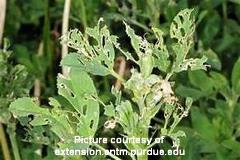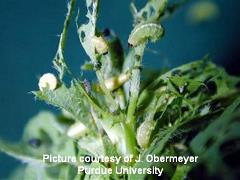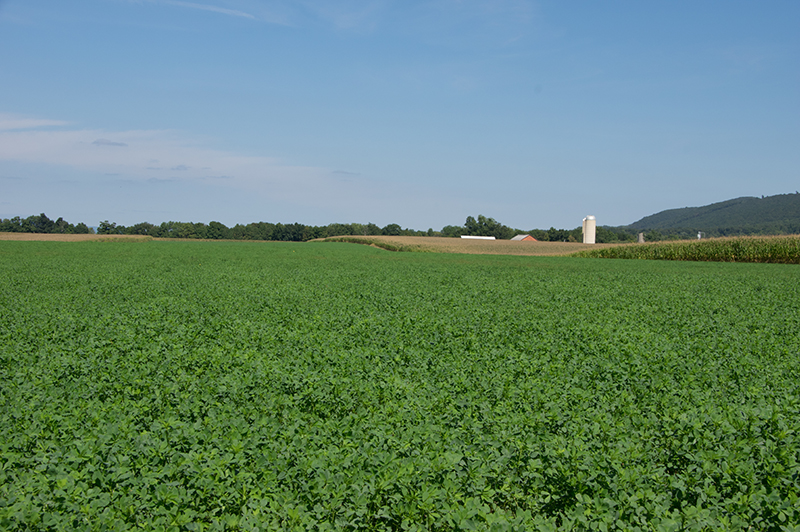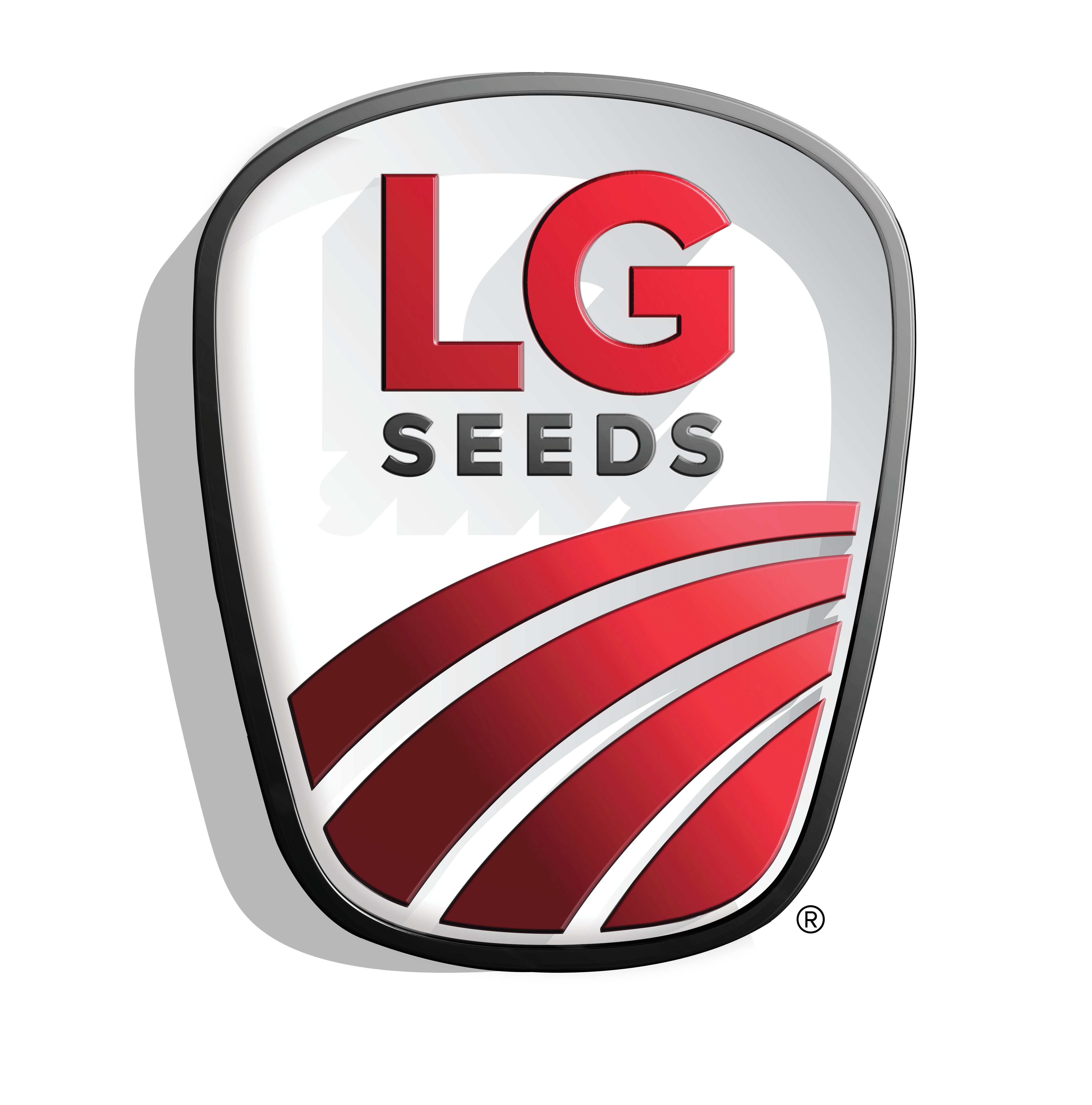AGRONOMICSUPPORT
YOU CAN TAKETO THE FIELD
Alfalfa Weevil
If you see defoliated leaves early in alfalfa fields prior to first cutting you may have alfalfa weevil. Detecting the weevil by scouting and knowing what to look for is the first step to reducing the damage it can cause. If you see the that it’s a problem, then evaluate the next steps to control it.


Alfalfa weevils are observable by late May into early June. The small yellow-greenish larvae have a white strip down the back and can grow to be 1 cm in length. The transformation into an adult happens in a white silken pea sized cocoon that is attached to the alfalfa leaf. Adult weevils grow to about .6 cm long and have a distinctive dark narrow stipe down their backs. The damage from the weevil can be easily visible but sometimes the weevil is hard to spot. Both adults and larvae feed on alfalfa foliage but the larvae do most of the damage. Initially, the larvae feed on the upper newest growth or terminal leaves but as the season continues, they migrate to the lower leaves. Tiny pinholes appear on the leaves first and as the larvae grow. damage increases to skeleton looking leaves. Significant yield loss can occur from feeding on regrowth after first cutting.
The key is to scout fields and determine if the weevils are at economic threshold. Weevil eggs begin to hatch at around 300 heat units (GDD’s) (base 48o) after March 1st. Feeding by larvae often commences about 70 GDD’s after hatch and can move from light feeding to heavy feeding over the next several weeks as the larvae grow thru 4 instars in their development. At about 600 GDD’s, the larvae will cease feeding and develop into pupae.
Start by walking a U or Z shaped pattern in the field collecting 50 stems. Determine the % of feeding on the stems. If 40% defoliation is determined 7-10 before scheduled harvest, you should spray to control these pests. Avoid spraying at bloom stage of the alfalfa due to the potential harm to honeybees and natural predators such as wasp. Early harvest is another option. This can reduce populations of weevils by 95-98%. Make sure to check regrowth 5-7 days after cutting for new alfalfa weevil injury.
The window for damage by alfalfa weevils in Wisconsin is small. However, if undetected, weevils can cause severe damage to the first cutting alfalfa. Recognize the sign for potential damage – skeletonized and /or grayish leaves when scouting. Detection is key followed by the determination of economic threshold for control of weevils. Information below from Purdue University and North Dakota State University further explains the thresholds and any chemical controls if such is warranted.
Sources and additional information:
- https://agweather.cals.wisc.edu/thermal_models/alfalfa
- https://www.ag.ndsu.edu/publications/crops/integrated-pest-management-of-alfalfa-weevil-in-north-dakota
- https://extension.entm.purdue.edu/fieldcropsipm/insects/alfalfa-weevil.php
- https://extension.entm.purdue.edu/publications/E-220.pdf






Technical Team Agronomist